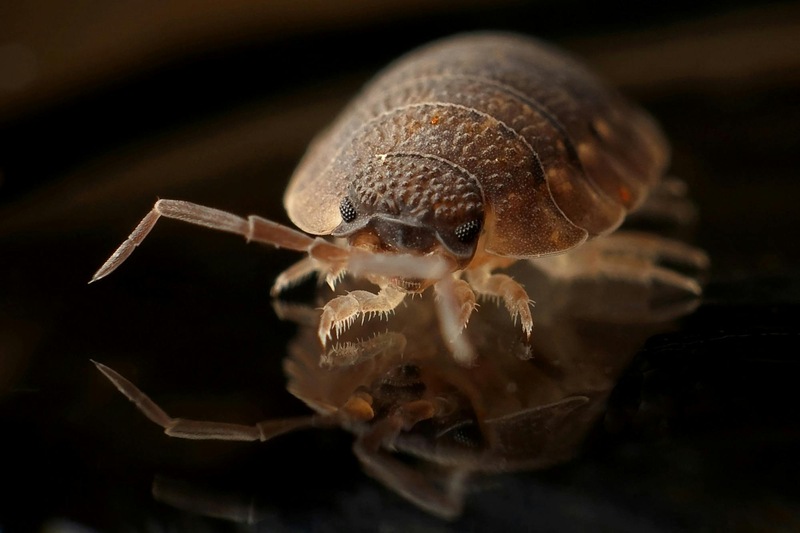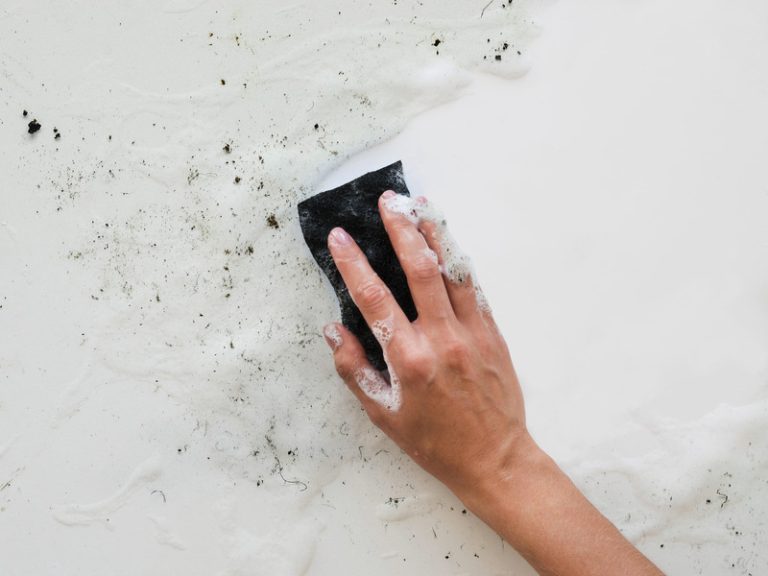Are you waking up with itchy bites on your skin and suspecting bed bugs as the culprit? And maybe, you’re also wondering what causes bed bugs to appear in your home.
In this article, we’ll explore what causes bed bugs complete to everything you need to know about these pesky pests. From what bed bugs look like to where they live, how they spread, and the causes of their infestation, we’ve got you covered.
Stay tuned to learn how to identify a bed bug infestation and the best ways to get rid of it for good.
What are Bed Bugs?
Before delving further into what causes bed bugs, let’s first understand what they are.
Bed bugs are small, reddish-brown parasitic insects that feed on the blood of humans and animals during the night. These nocturnal pests are known for causing jitters among homeowners and tenants due to their secretive behaviour and biting habits.
Their physical appearance is often described as flat and oval-shaped, with a distinctive rusty-red colour that intensifies after a blood meal. An adult bed bug measures about 5-7 millimetres in length, making it visible to the naked eye. While they do not have wings, they can move swiftly across surfaces with their six legs. This enables them to hide in cracks and crevices near their hosts’ resting areas.
a. What Do Bed Bugs Look Like?
Bed bugs have flat, oval-shaped bodies ranging from reddish-brown to light brown in colour. They are about the size of an apple pip. After feeding, their bodies swell and turn a reddish hue, often leaving blood stains on the fabric. Bed bugs do not have wings but can crawl efficiently.
These nocturnal creatures are adept at hiding in cracks and crevices, making them challenging to detect. The size and colour of bed bugs can vary depending on their life stage, with nymphs being smaller and almost translucent.
Adult bed bugs have distinct horizontal stripes behind their heads and six legs that enable them to move quickly across various surfaces, including bedding, furniture, and walls.
When not engorged with blood, they can appear quite flat, allowing them to squeeze into tiny spaces. Their ability to survive long periods without feeding makes them resilient pests that can go undetected for extended periods.
b. Where Do Bed Bugs Live?
Bed bugs can be found in various hiding spots, with a preference for close proximity to where humans sleep or spend extended periods. Common locations include mattress seams, box springs, and cracks in bed frames. They can infest furniture, fabric items, and upholstery.
These sneaky pests are masters of concealment, favouring the dark and cosy nooks within sheets, blankets, and pillowcases for their daytime refuge. Carpeted areas near beds are also prime real estate for bed bug colonies to flourish, as their flat bodies allow them to slide easily into tight crevices. Cracks and crevices in walls, especially near the bed, provide an ideal hiding place for these nocturnal creatures, giving them convenient access to their human hosts during the night.
How Do Bed Bugs Spread?
Bed bugs spread primarily through human activities, hitchhiking on clothes, luggage, and other personal belongings. They are attracted to body heat and carbon dioxide, seeking blood meals by feeding on exposed skin during the night.
Bed bugs can also infest public spaces such as hotels, cinemas, and public transport, spreading from one location to another via unsuspecting travellers.
Their ability to reproduce quickly allows infestations to grow rapidly, making timely identification and pest control measures essential in preventing their further spread.
a. Can Bed Bugs Travel on Clothing?
Bed bugs have the ability to travel on clothing, especially in situations where infestations are present. They can cling to fabric fibres and hide in seams, cuffs, or folds, facilitating their movement from one location to another.
Once bed bugs hitch a ride on clothing, they can easily get transported to homes, hotels, or public places, posing a risk of infestation. The flat bodies of these pests enable them to squeeze into tiny spaces on garments, making detection tricky.
Preventing the spread of bed bugs through clothes involves being vigilant while travelling and promptly washing and drying potentially exposed clothing at high temperatures to kill any hidden bugs.
b. Can Bed Bugs Live in Your Hair?
Bed bugs do not typically live in human hair as they prefer to feed on exposed skin areas. Their feeding process involves piercing the skin with elongated mouthparts and injecting saliva to facilitate blood flow. Hair is not an ideal feeding or hiding location for bed bugs.
When bed bugs seek a meal, they are drawn to areas where the skin is easily accessible, such as the arms, legs, and neck. The hair on the human body poses a challenge for it to reach the skin, making it an unattractive location to feed. Bed bugs have evolved to detect body heat and exhale carbon dioxide, guiding them to their feeding grounds with precision.
Bed bugs lack the specialised structures required to navigate through hair efficiently. Their flat bodies are better suited for slipping into small crevices and seams, rather than maneuvering through dense hair follicles. This further reinforces the fact that hair is not conducive to the lifestyle of bed bugs.
c. Can Bed Bugs Jump or Fly?
Bed bugs are unable to jump or fly due to their lack of wings and limited mobility capabilities. Instead, they rely on crawling to move between different surfaces and locations, including bedding, furniture, and walls.
Regarding moving around, bed bugs exhibit a remarkable ability to traverse various surfaces with ease, aided by their specially designed legs. These tiny pests can crawl quickly over carpets, mattress seams, and wall crevices, seeking out their next feeding location. This is where their adaptability shines. It’s a common misconception that they can jump or fly, but in reality, their movement is predominantly restricted to crawling. Understanding these locomotive traits is crucial for effective pest control strategies.
What Causes Bed Bugs?
Bed bug infestations can occur due to various factors, including travel, second-hand furniture, and proximity to existing infestations. These pests can be introduced into homes through luggage, clothing, or used bedding, highlighting the importance of vigilance and early detection.
One common source of bed bugs in homes is travel, as these insects have a knack for hitchhiking in luggage and clothing, especially in hotels and public transport. Additionally, second-hand furniture can harbour bed bugs, making it crucial to inspect any used items before bringing them indoors. Proximity to existing infestations also poses a risk, as neighbouring units or shared walls can provide an easy pathway for bed bugs to migrate. To minimise the chances of infestation, sealing cracks and crevices, regularly laundering bedding, and maintaining clutter-free spaces can be effective preventive measures.
a. Can Bed Bugs Come from Outside?
Bed bugs can indeed originate from outdoor environments, where they may infest birds’ nests, animal burrows, or abandoned structures. Once in proximity to human habitation, bed bugs can migrate indoors in search of suitable hosts for feeding.
This outdoor-to-indoor migration poses serious challenges as it increases the risk of bed bug infestations in residential and commercial spaces.
The proximity to human dwellings provides bed bugs with easy access to potential blood meals, facilitating their movement indoors.
Effective outdoor pest control programmes are crucial in reducing the outdoor bed bug populations, thereby minimising the chances of migration into indoor environments.
b. Can Bed Bugs Infest a Clean Home?
Contrary to common misconceptions, bed bugs can infest even clean and well-maintained homes. Their presence is not necessarily indicative of poor hygiene but rather a result of factors like travel, shared living spaces, or accidental introduction through infested items.
These pesky insects are excellent hitchhikers and can be picked up in various public places, such as hotels, public transportation, or even cinemas. Once brought into a home, they can quickly spread throughout, hiding in cracks, crevices, and furniture.
Furthermore, bed bugs are skilled at remaining undetected, making it challenging for homeowners to spot them early on. Their ability to survive for months without feeding allows them to persist even in spotless environments.
c. Can Bed Bugs Be Brought in from a Hotel?
Hotels can serve as common sources of bed bug introduction into homes, as these pests can hitchhike on luggage, clothing, or personal belongings during travel stays. Checking for signs of bed bugs in hotel rooms is essential to prevent their inadvertent transfer.
While most hotels have strict cleaning protocols, bed bugs can still find their way into these establishments. It’s crucial to inspect mattresses, headboards, and skirting boards for telltale signs like blood stains or small black droppings that indicate a bed bug presence. Keeping luggage off the floor and using protective covers for suitcases can help minimise the chances of bringing these unwanted guests back home. If you suspect bed bugs in a hotel room, promptly alert the management to address the issue and prevent further spread.
d. Can Bed Bugs Be Transferred from Person to Person?
Whilst bed bugs primarily seek human blood for feeding, direct transfer from person to person is uncommon due to their preference for stable hiding spots near sleeping areas. Shared living spaces or close interactions can facilitate the unintentional spread of bed bugs among individuals.
Bed bugs are notorious for hitchhiking without being noticed, often latching onto clothing, bags, or furniture in shared spaces.
When individuals spend time in close proximity, such as in hostels, dormitories, or even public transport, there is a higher chance of bed bugs transferring between people.
How to Identify a Bed Bug Infestation?
Identifying a bed bug infestation involves recognizing common signs such as small blood stains on bedding, dark spots of excrement, and distinctive musty odours. Visual inspections of mattress seams, furniture cracks, and wall crevices are crucial in detecting these elusive pests.
When checking for bed bugs, one should also pay attention to eggshells, shed skins, and live bugs themselves. The presence of bites on your skin, arranged in clusters or a linear pattern, can be another strong indication of a bed bug issue. Regular vacuuming and decluttering can help reduce hiding spots for these insects. Employing sticky traps, monitoring devices, and enlisting professional pest control services can be effective strategies for tackling a persistent infestation.
How to Get Rid of Bed Bugs
Eliminating bed bugs often requires a combination of professional extermination services and home treatments. Engaging licensed exterminators and implementing targeted strategies like vacuuming, steaming, and encasing mattresses can help effectively eradicate bed bug populations.
Another crucial aspect of bed bug removal is understanding the importance of preventive measures.
- Regular inspections of potential hiding spots, such as bed frames, bedside tables, and skirting boards, can help in early detection and containment of infestations.
- Reducing clutter and sealing cracks and crevices in walls and furniture can create less favourable conditions for bed bugs to thrive.
Such is a complete explanation of what causes bed bugs, complete with how to spread, identify, and exterminate them.
From the information provided, it’s evident that dealing with bed bugs requires thorough attention and expertise to ensure complete eradication and prevent future infestations. Not only do bed bugs affect the comfort and hygiene of your home, but they also pose potential health risks, making it essential to address the issue promptly and effectively.
Let TEKA Cleaning be your solution to bed bug woes. Our professional house cleaning services are equipped to handle bed bug infestations, providing comprehensive cleaning solutions to eliminate these pests and restore the cleanliness and comfort of your home.
Book now or give us a call at 01233 751 544 to schedule your house cleaning with TEKA Cleaning. Don’t let bed bugs disrupt your peace of mind any longer. With TEKA Cleaning, you can trust our expertise to tackle bed bugs effectively and ensure a clean, healthy living environment for you and your family.
Read also:











